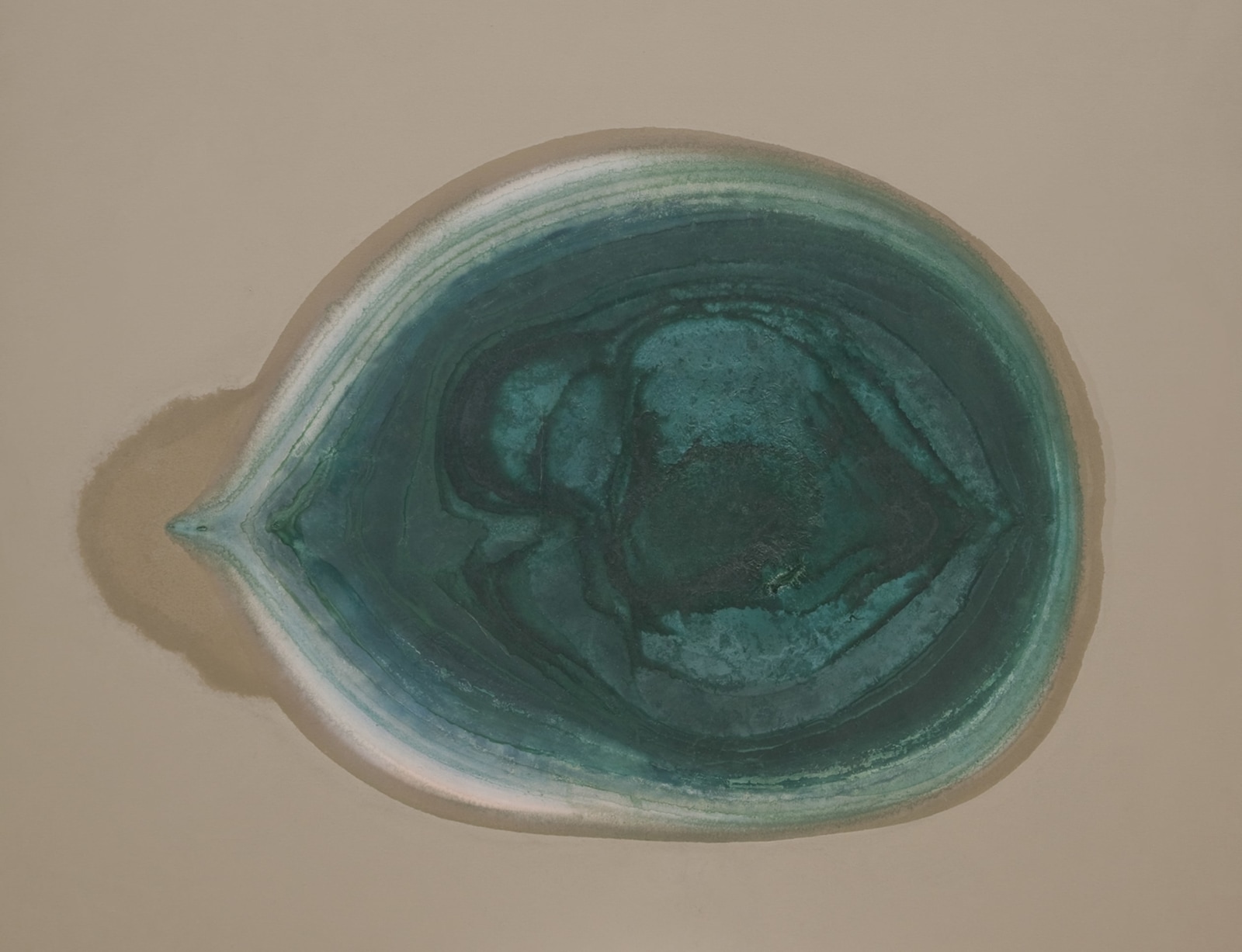
Pools of pigment and binder evaporate from Alwar Balasubramaniam's canvases in the solo Liquid Lake Mountain at Delhi's Talwar Gallery, leaving behind cracks that are evocative of atrophy in the natural world. Some of these fissures are gentle, recalling the scorched earth of dry riverbeds, while others, as in Up in the Air, appear like brutal ruptures of the canvas skin. These traces also serve to remind us of what is lost or transformed, as evaporating pools of water transition from states of materiality to immat eriality.
From the 8th of February to the 12th of May, Balasubramaniam's show sharpens our perceptions, making us aware of the unseen natural forces that surround us. In past shows, he has drawn attention to the swish of the wind, the wondrous power of magnetic forces and the gnawing effect of time and tide on the material world. Equally, his art works have given form to negative spaces such as the unseen enclosures between clasped hands or even the shadows that objects throw.
In the latest body of works on display, reverberations of the artist's move to the rural environs of Tirunelveli from the bustling city of Bengaluru are pronounced. The undulating landscape with its gentle hills and lakes has obviously contributed to his visual syntax. Works such as Under current, fashioned out of soil, pigment, and fiberglass, are reminiscent of mudslides created by the sheer force of swirling water. Similarly, Red Earth draws our attention to the urgent gush of water as it cascades down the reddish laterite hillsides in South India.
Nowhere is the artist's move to more idyllic surroundings more evident than in works such as Liquid lake mountain, which summons memories of new beginnings as it resembles a germinating seed. One can imagine the pool of sublimating colour from this work floating through the gallery before gently settling on the wall in an adjacent room. Here is a scene of breath-taking iridescence. In the centre of a pool of light, a gentle cloud is painted on the wall. You meet the painted cloud in an untitled oil on canvas in the basement as well. There is a Turneresque quality to this work, suffused as it is with a luminescence created by the artist's dexterity as he plays with colour and light.
Balasubramaniam's ability to create works that call for heightened sensitivity on the viewer's part are equally evident in his other acrylic, cotton and fibreglass artworks. The barely perceptible cottony forms, mounted in the stairwell of the gallery, can be teased out by a discerning and patient eye. On the rooftop of the building a surprise awaits viewers familiar with the artist's work. A brick-red, giant anthill-like structure made of writhing roots, tree trunks or human and animal bodies appears to mark a departure from his minimalistic practice. Titled, Study for a liquid mountain, the almost molten wax-like forms are fashioned out of fiberglass and iron. This work draws on memories that the artist had of a road trip in America when he visited some underground caves and was captivated by their magnificent stalactites.
The ease with which the artist manipulates materials is also evident in the cochlear Seeing the sea as a shell in which he sculpts layers of terracotta tiles and cement or in Withhold, where strips of plywood are joined together to create intriguing objects. This play with materials to reference the immaterial world and make invisible forces visible is what makes Balasubramaniam's show so special.
-Meera Menezes